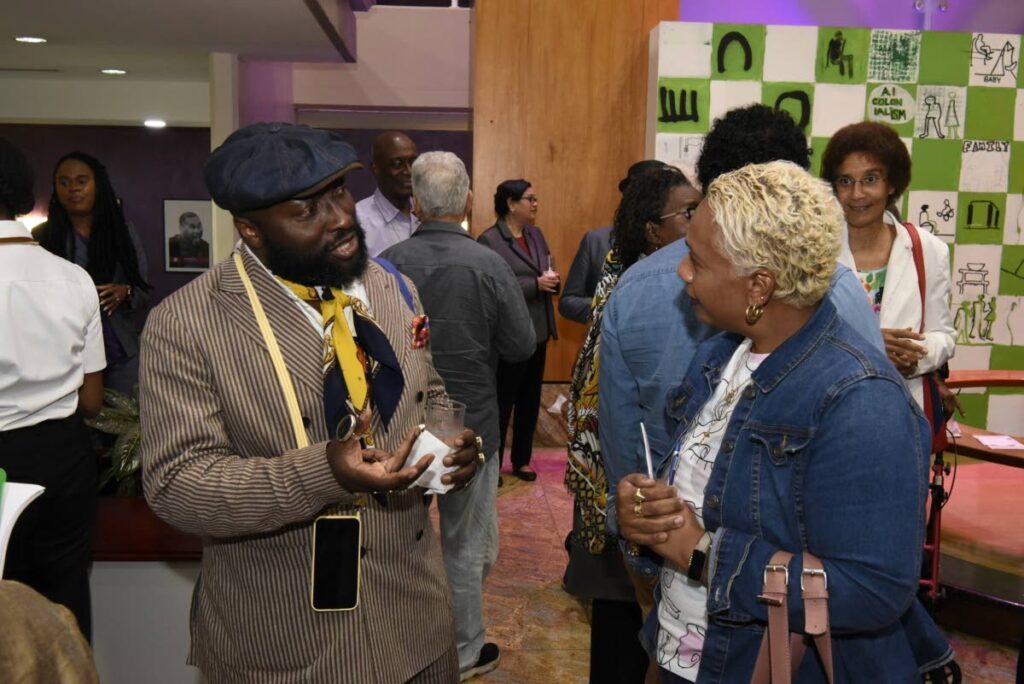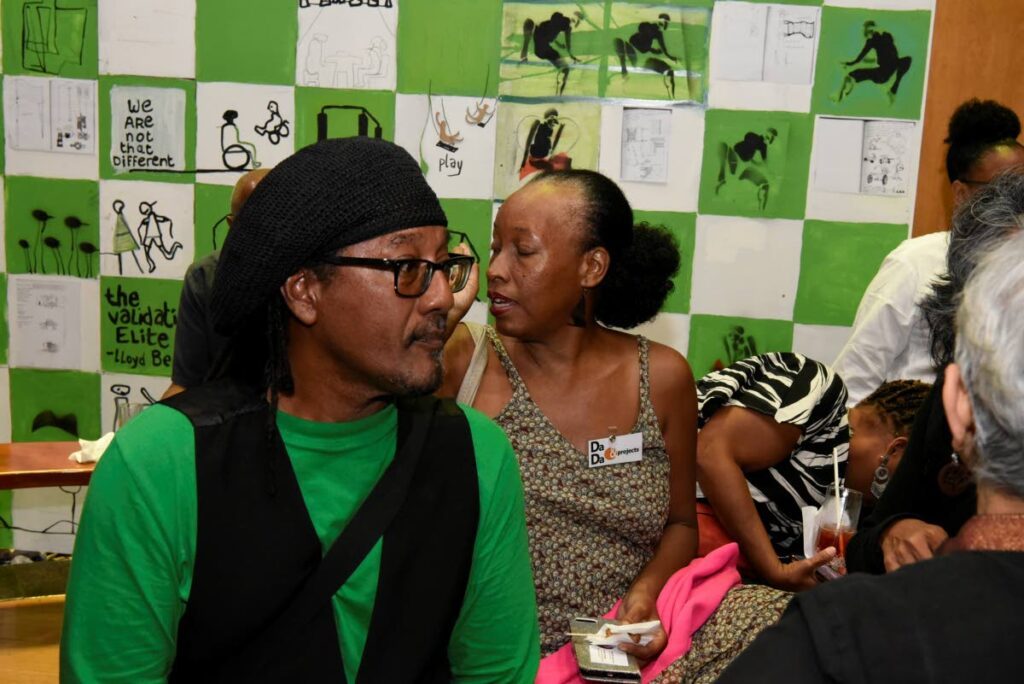Da Da and Projects examines public spaces

Da Da and Projects wants to start a national conversation.
That conversation will include discussion not only about how space is used, but the beauty, functionality and relevance of that space or place to the people occupying it and their environment.
Developing Art and Design Awareness and Projects (Da Da) was established in 2011.
The NGO's 2023 symposium and exhibition examined, over three days, Social Art and Design: Public Space and Community Transformation. It ran from November 16-18 and was done collaboratively with the Central Bank of Trinidad and Tobago.
It explored ideas and topics such as: democratising and enhancing public space in TT; Carnivals/festivals in public spaces; and planning, art and design and the quality of public space. The symposium was free to the public.
Its opening night at Central Bank Auditorium, Independence Square, Port of Spain, began with Central Bank’s governor Dr Alvin Hilaire talking about what it was like growing up on Duncan Street, Port of Spain, and the changes from then to now.
Hilaire said it was a fact that people affect their environment and the environment affects people.
“The most dramatic representation of this is climate change, where, depending on how we consume, how we travel, how we do our daily business and what we indulge in, we can be creating hazards for our planet.”
This was already being seen with rising sea levels and temperature changes.
He paraphrased a quote from a speech by late British prime minister Winston Churchill: “We shape our buildings; thereafter they shape us.”

Hilaire said, “In other words, depending on where we are, it affects us…How we are in our environment, the space is laid out – whether you have big sidewalks, small sidewalks, play spaces and so forth…it affects you.
“It affects you physically because you can have problems of congestion. The covid19 pandemic was a big representation of that. Your mental health can be affected, stress levels, your sense of community, even your economic prospects depending on where you are, you may not be able to perform as well, you may have a stigma attached to it.”
Recalling what it was like growing up in Duncan Street, Port of Spain, Hilaire said it was a wonderful place, with architecture that was more colonial: there was the “plannings,” and recalled a resident planting trees.
“Those trees grew up to be so wonderful and a place for us all to enjoy. It was part of our life and our atmosphere. Over time what has happened. As we know things have changed, we have the pressures of modern life, congestion, noise pollution, other pollutions, car-dependent societies, crime…
“The architecture of the place is different. It is hodgepodge now,” Hilaire said.
This led him to say that architects, town and transportation planners should be able to design spaces that are appropriate for people as human beings.
“Not physically you have a place to sleep, but a place to thrive and nurture your family and generations to come.”
Hilaire also said there should be mandatory regulations for sidewalks to be a certain size, play spaces and those spaces should not only be commercial.
“Otherwise you get trapped into something that is not worthwhile.”
He closed by saying he hoped Trinidadians could not just fulfil themselves as economic animals, but as human beings living in a society that respects their “overall well-being and create a wonderful present and future for us and our generations to come.”

The organisation’s chair, Valerie Taylor, guided the audience through remarks by the Central Bank’s museum curator Nimah Muwakil Zakuri, video presentations about the organisation and its projects, and reflections on the work by installation artist and Da Da and Projects member Dean Arlen and fellow member and architect Sean Leonard.
Cameroonian-born, German-based director and chief curator of the House of World Cultures, an art centre in Berlin, Germany, Dr Bonaventure Soh Bejeng Ndikung delivered the evening's keynote address.
He discussed: Being in and of the Land or the Socioaesthetics of Space: A Proposal in Six Movements.
In fact he discussed it in four moves. Using poetry, quoting from the Guyanese historian, politician and activist Walter Rodney’s seminal work How Europe Underdeveloped Africa, and anecdotal examples of intersection between spaces and people on the African continent, he encouraged thought on street names, the relevance of monuments to public spaces and design being relevant to the space and socio-cultural environment in which it is built.
In the opening lines of his 50-minute keynote address, Ndikung read from two poems, The Long Reach by former South African poet laureate Keorapetse “Bra Willie” Kgositsile, and Landscape to the Left and Right by German poet Daniela Danz.
This flowed into a discussion which highlighted how “artists and cultural workers participate in making places by giving meaning to spaces,” he said.
“I have understood this invitation to speak at this conference on public space and community transformation as an invitation to share with you how cultural workers from my geographies have questioned what the public is. Who makes up the public? Who has the rights and privileges to belong to the public? How does one think of the public as encompassing the human and, beyond humans, the visible and invisible beings that accommodate our spaces?”
He added the invitation also led to questioning the spaces in which people find themselves, the politics of those spaces, who owns those spaces and what colonial, neo-liberal capitalist economic measures shape the spaces people call their own.
In the first movement, he shared the story of Cameroonian artist and activist Andre Blaise Essama, who has been on a “decades-long mission to purge his country of colonial-era symbols,” a 2020 BBC article said.
Ndikung said Essama’s work was a place-making and place-holding practice.
In the four movements, Ndikung used poetic language and devices to lead the audience, which included former UWI principal and minister of planning Dr Bhoe Tewarie, to ideas on how spaces should be built and definitions of
public spaces.
He said in his discussion on Essama, “As opposed to what one might think, the public space is not the property of the public, but the state or city authorities….”
He said streets and other public spaces were spaces of documentation or archives.
“Public spaces are spaces of negotiations where the national myth encounters citizens’ realities. If public spaces are truly public – which is to say pertaining to the people – they must take not only the histories of the people, but also the physical and psychological well-being too,” Ndikung said.
He said when people navigate these spaces they learn about who they are and where they stand.
“How does one navigate spaces of erasure under which so many lives and cultures have been buried? Not with the aim of planting something fruitful for the people, but with the aim of disappearing or exterminating.
“How can artistic practice become a means of de-erasure of unlearning, of de-burial of all those histories, cultures, people that have been buried? Or, at least, how can artistic practice be a possibility of watering, for creating those right conditions for those spores, for those 'dia-spores,' 'pluri-spores' that have been waiting hundreds of years to unfold, to germinate, to grow and to blossom?”
At the end of the four movements, Ndikung said people must all, with collectively and clarity, own and shape public spaces and understand them “as living and breathing spaces.”
“We must embrace public spaces as spaces that embody, contain people’s knowledge systems and to serve as infinite fountains where any human being can come to drink from that collective wisdom.”

Comments
"Da Da and Projects examines public spaces"